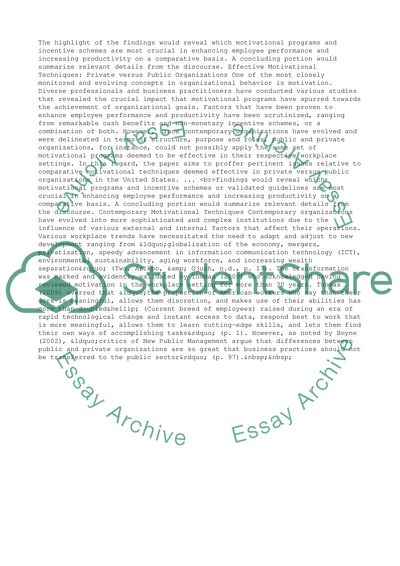Cite this document
(“Effective Motivational Techniques: Private versus Public Organizations Research Paper”, n.d.)
Effective Motivational Techniques: Private versus Public Organizations Research Paper. Retrieved from https://studentshare.org/business/1440813-effective-motivational-techniques-in-the-workplace
Effective Motivational Techniques: Private versus Public Organizations Research Paper. Retrieved from https://studentshare.org/business/1440813-effective-motivational-techniques-in-the-workplace
(Effective Motivational Techniques: Private Versus Public Organizations Research Paper)
Effective Motivational Techniques: Private Versus Public Organizations Research Paper. https://studentshare.org/business/1440813-effective-motivational-techniques-in-the-workplace.
Effective Motivational Techniques: Private Versus Public Organizations Research Paper. https://studentshare.org/business/1440813-effective-motivational-techniques-in-the-workplace.
“Effective Motivational Techniques: Private Versus Public Organizations Research Paper”, n.d. https://studentshare.org/business/1440813-effective-motivational-techniques-in-the-workplace.


